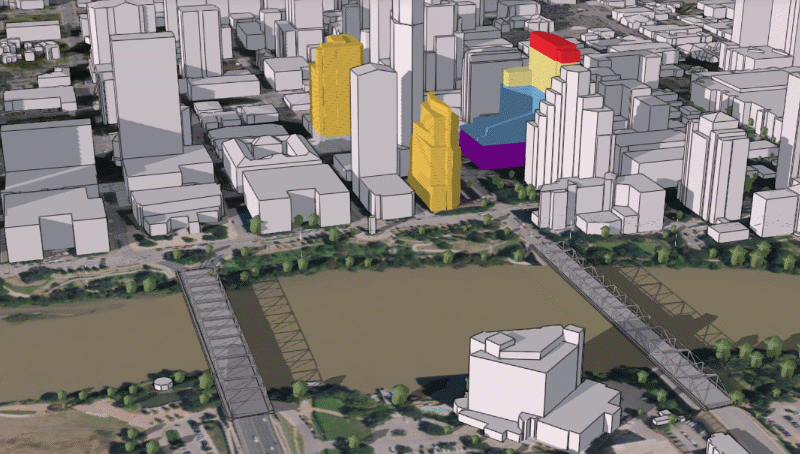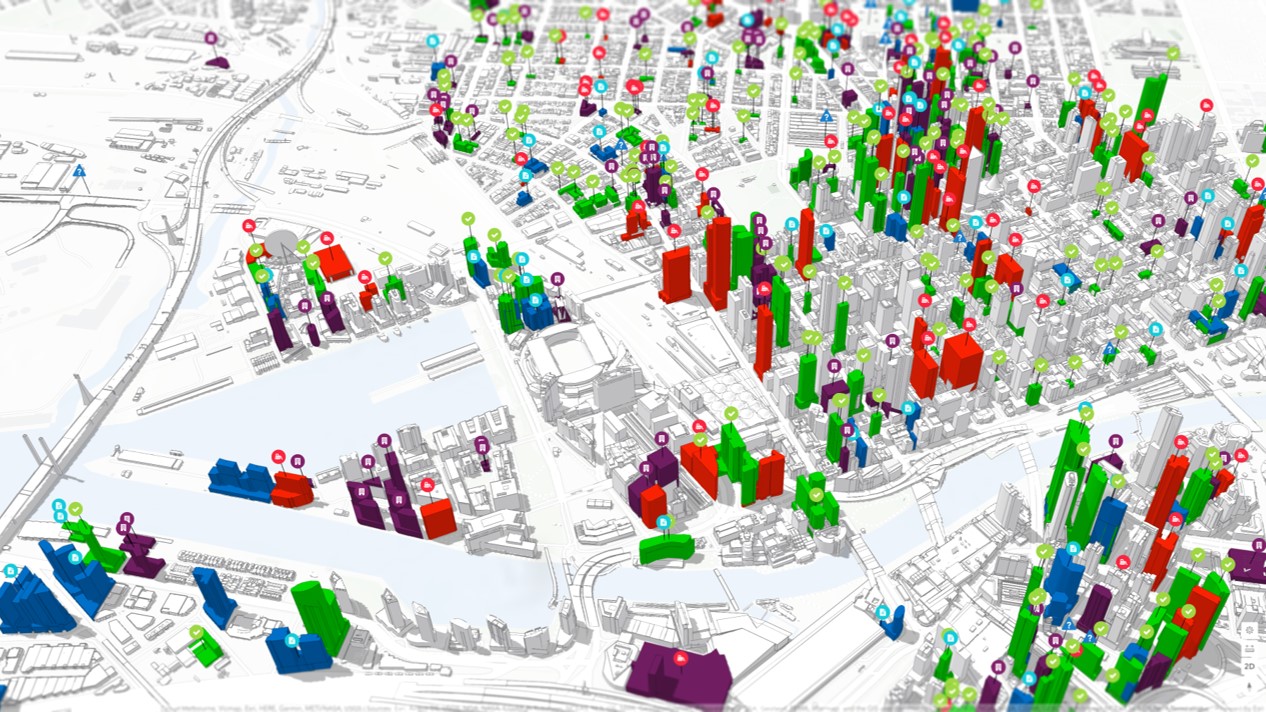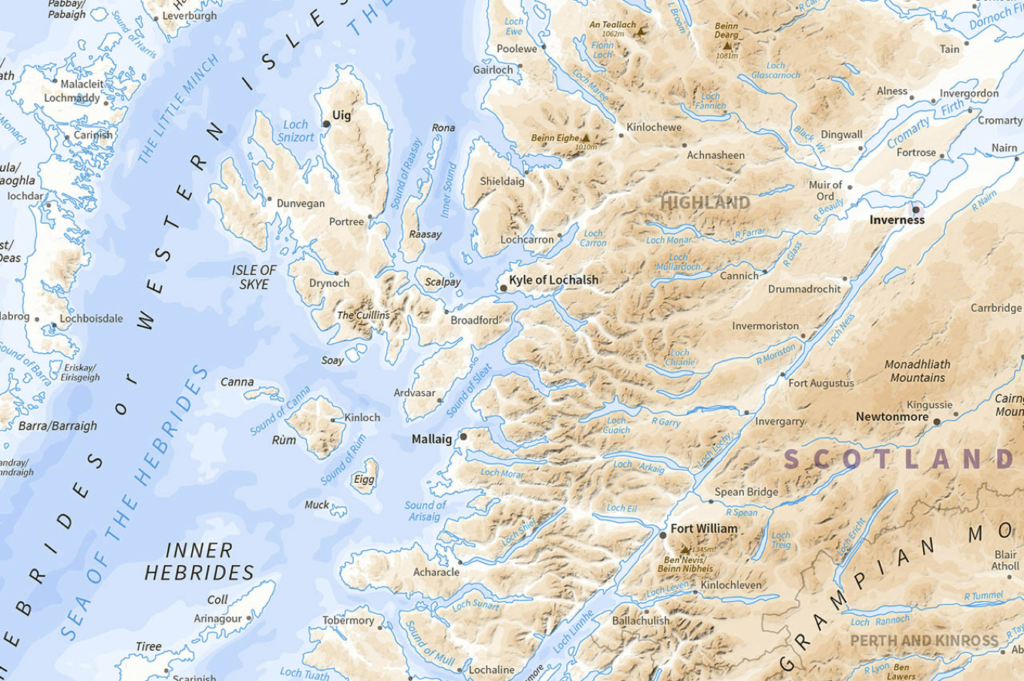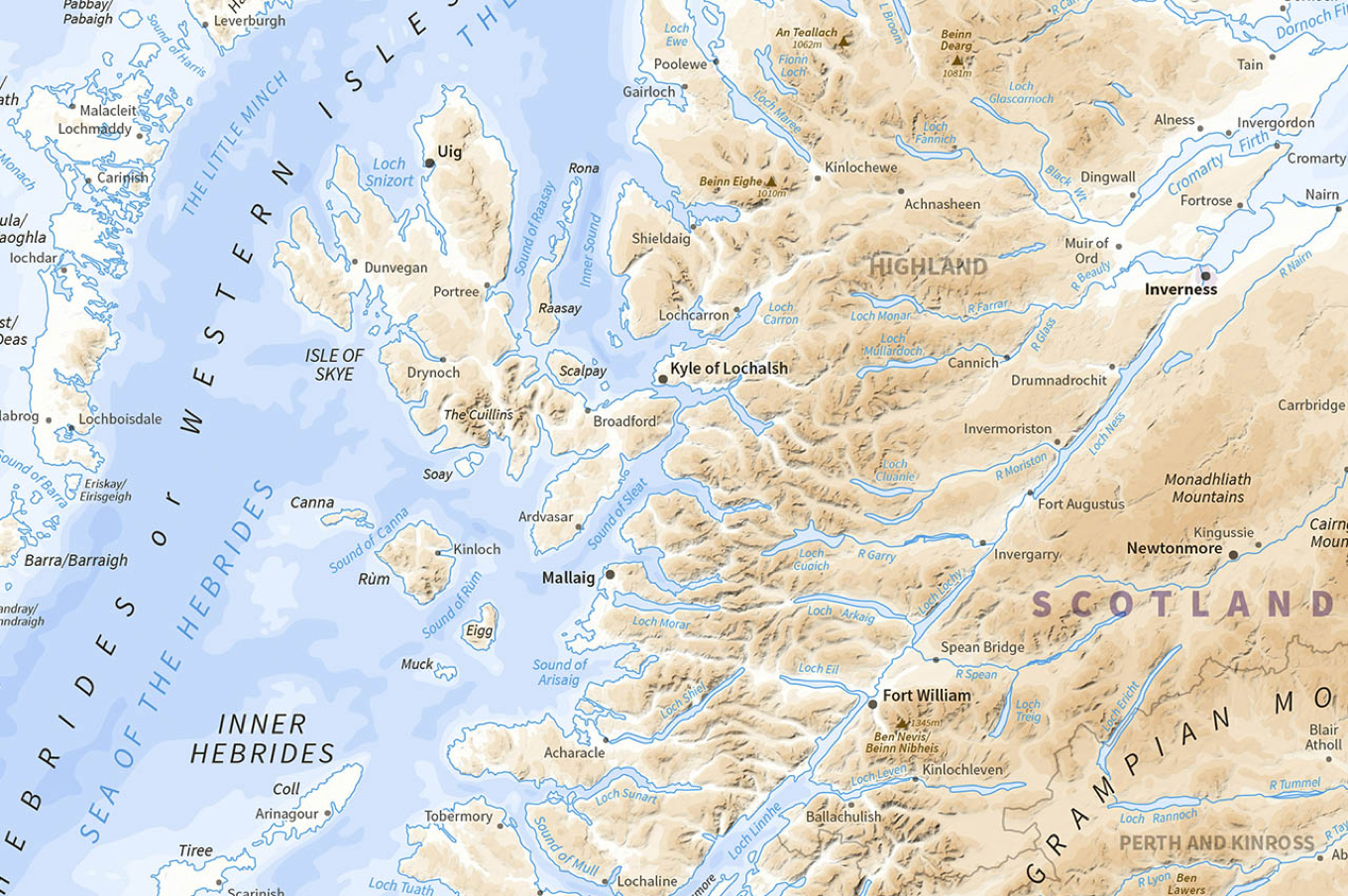
Visualize above-ground and under-ground utilities with Esri’s new 3D Basemaps solution

Esri has released a new ArcGIS solution that leverages an organization’s existing data (LiDAR, building footprints, underground utilities, etc.) to streamline the creation and maintenance of a 3D basemap for the community. The output of the 3D Basemaps solution is a collection of 3D layers that GIS analysts can leverage as a 3D basemap for desktop, mobile, and web mapping applications.
The importance of 3D visualization and analysis in urban environments is growing rapidly for both utility companies and government organizations at all levels. With the ability to view the community in 3D becoming imperative for sustainable planning and community engagement alike, it is now accepted that 3D map resources provide stakeholders with a better understanding of what is happening where, allowing for a faster and more engaged decision-making process.
However, many organizations across the world are still struggling to create and maintain 3D basemaps that can foster the adoption of 3D visualizations for a wide range of use cases such as urban planning, emergency management, and real estate.

City-wide project visualization in ArcGIS Urban using a 3D basemap
Esri’s new 3D Basemaps solution can help these organizations to create, maintain, and share 3D basemaps at various level of details, including:
- Elevation: A detailed ground elevation layer can be automatically generated from the input LiDAR data.
- Buildings: Buildings with simple roof structures can be generated automatically from the LiDAR. Attributes such as building height and roof form are extracted from the LiDAR and added to the building footprints.
- Floors: Buildings can be split into floors using attributes such as floor height and number of floors or according to space use type.
- Trees: Tree location and size can be extracted from ground classified LiDAR as point features.
- Bridges: If bridge surfaces are classified in the LiDAR and the LiDAR is dense enough, it is possible to extract the bridge surfaces as 3D polygons.
- Powerlines: You can use your existing GIS data to visualize distribution and transmission lines in 3D. A wide variety of conductor and tower configurations are supported.
- Underground pipes: By leveraging elevation attributes, you can also turn your existing 2D underground utility features into 3D features from existing GIS data.
Esri says that this new release is a major enhancement of the existing local government 3D basemaps solution which has been moved to mature support.





